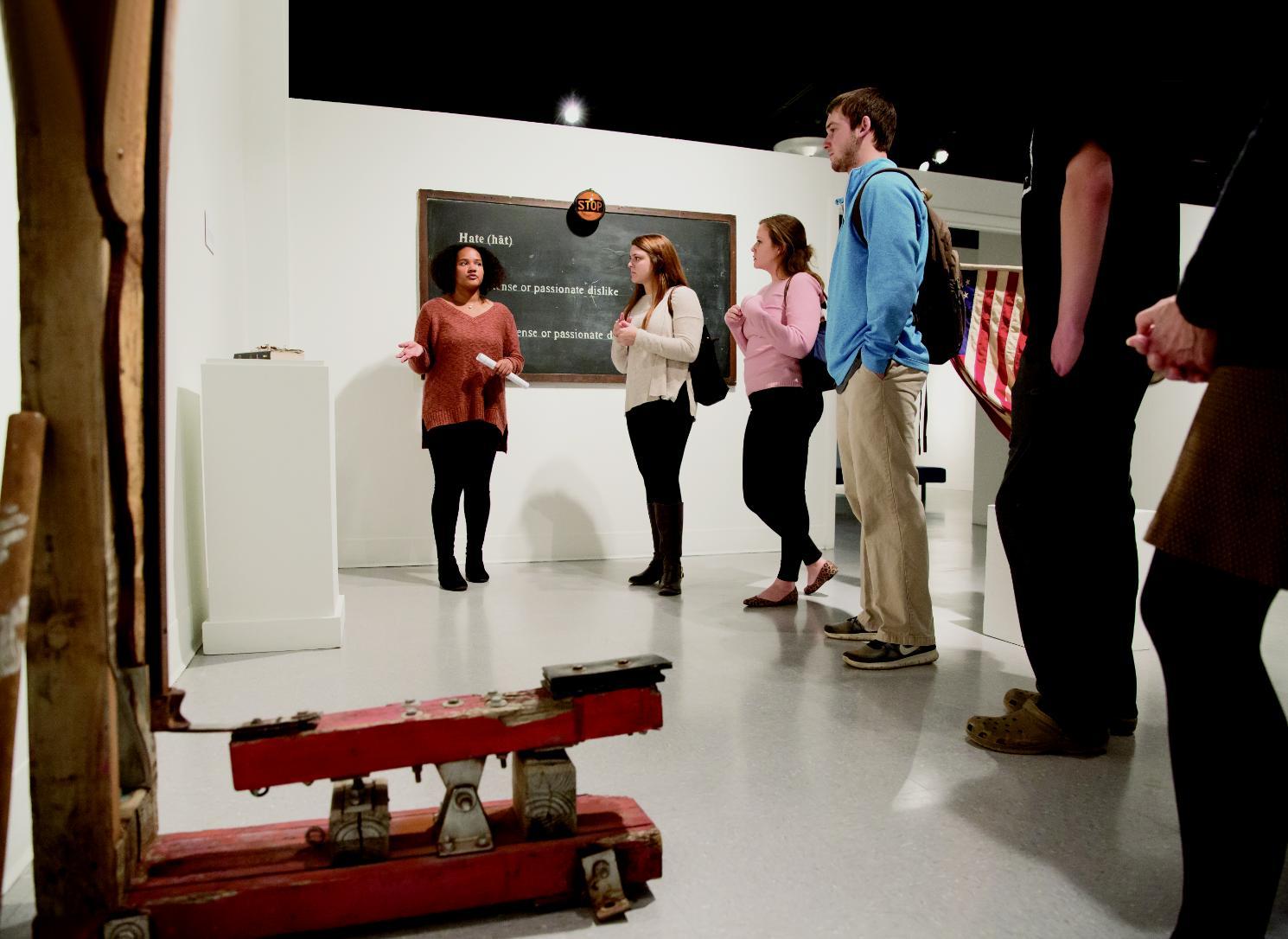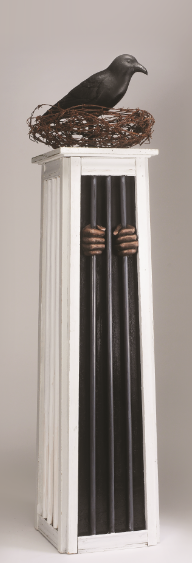Exhibition programming included a guided gallery walk-through for Longwood students.
Art is at its best when it begins a conversation, says Rachel Ivers, executive director of the Longwood Center for the Visual Arts.
One stunning and provocative collection that tackles some of the most divisive issues in the United States—civil rights, equality, justice—did just that over its four-month run in LCVA’s Main Street galleries in Farmville, which ended Feb. 26. Titled Break Glass: The Art of V.L.Cox—A Conversation to End Hate, the collection featured sometimes-jarring pieces: a bloodstained Ku Klux Klan robe; a series of doorways bearing the words “Colored Only,” “Whites Only,” “LGBT Only”; religious imagery modified to make viewers reconsider its meaning.
The exhibition at Longwood was the largest ever of Arkansas-based artist V.L. Cox’s work, which has been shown across the South and is in numerous private collections. But, says Ivers, the most important aspect of the exhibit was its impact on the community.
“It was critical that we did more than just make this important art available for public consumption,” she said. “From the beginning, we talked about how to address the themes of the show more broadly on campus and within our community. Working with several departments, we put together a schedule of events that engaged students, faculty and community members and dove deep into the issues that V.L. Cox tackles in her work.”
Those events included a film screening and discussion of the acclaimed and provocative 2016 film Get Out, several gallery talks and tours, and two high-profile speakers— Dr. Jacquelyn Serwer, chief curator at the Smithsonian’s National Museum of African American History and Culture, and Daryl Davis, a musician who is the subject of the PBS documentary Accidental Courtesy.
The LCVA also brought in partners including the Moton Museum, Virginia Center for Inclusive Communities and the Virginia Holocaust Museum to offer a professional development workshop for teachers addressing topics explored in the exhibit.
“Personal conversations, with respect to one another, need to be had before we can move forward together,” said Cox. “There used to be a time when people could agree to disagree with civility, yet still have things in common. We need to find that place again.”
For Jonathan Page, director of citizen leadership and social justice education at Longwood, the larger conversation that was prompted by the exhibition has marked a high point in awareness of social issues both on and off campus.
V. L. Cox, Jim, 2015, mixed media installation, 66 x 20 x 20 inches, courtesy of the artist.
“The world has changed in the last several years,” he said. “From Farmville to Fresno, people are reconsidering past assumptions they have made and rethinking how we deal with these social issues as a group of citizens.
It’s often an unsettling process. It’s sometimes painful or humbling. “For Longwood to lead a conversation locally that involves students, faculty, staff and community members underscores our commitment to the university’s central mission: creating citizen leaders. Good citizen leaders think critically about the world around them and have those tough conversations about social inequality and race that were confronted so powerfully in this exhibit. That’s important and noble work, especially in a place with our history.”




Leave a Comment